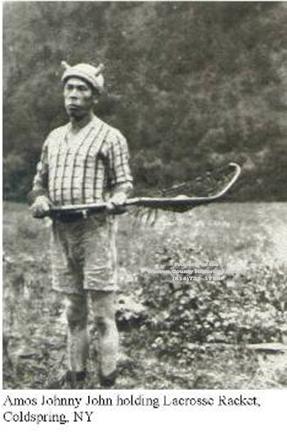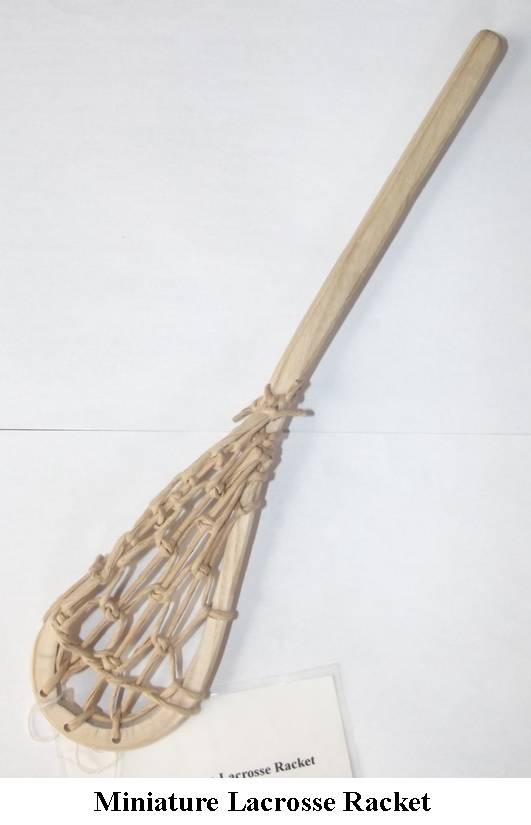LACROSSE
A FRIEND AMONG THE SENECAS David Swatzler
 “This athletic ball game was the Iroquois’ (Seneca) favorite sport. It was much more than a "sport" in our modern European-American sense of the word. American Indian lacrosse had a profound spiritual and religious dimensions difficult for European Americans to appreciate. Lacrosse was sometimes played to effect beneficial changes in health and weather.
“This athletic ball game was the Iroquois’ (Seneca) favorite sport. It was much more than a "sport" in our modern European-American sense of the word. American Indian lacrosse had a profound spiritual and religious dimensions difficult for European Americans to appreciate. Lacrosse was sometimes played to effect beneficial changes in health and weather.
American Indians loved to play the game on a grand scale. Forty, sixty, sometimes a hundred or more “warriors” took to the playing field, which was often four or five times longer than a modern football field, with the goals as far apart as a quarter of a mile. There were no sidelines; field width was limited only by the size of the clearing and contours of the surrounding terrain. One game in 1797 at the Grand Ricer Reservation in southeastern Ontario, between the Mohawk and Seneca nations, was played on a 100-acre field. Each side had a reserve of 600 players and fielded 60 of them at a time, for a total of 120 players continuously on the field.
Naked except for breechcloth, body decorated with red war paint, each player was armed with a 5-foot long lacrosse stick. The stick was sharply curved at the business end, with a web of rawhide, or untanned deer hide, netting stretched inside the curve. The web was taut enough that the ball could be effectively thrown, but not so taut as to preclude carrying the ball on the web in a very shallow depression — more like a saucer than a cup or pocket. The ball was of buckskin, stuffed with hair, grass, or sand, and sewn around the circumference. The ball was round and about 2.5 inches in diameter.” 
BOOK OF AMERICAN INDIAN GAMES — page 184-187
"The two teams were arranged in almost any formation between their own goals and the center of the field. The referee threw the ball from center field high and straight up into air, then got out swiftly from under as the players from both sides made a wild rush for the ball as it fell, trying to get their rackets under it before it hit the ground. The player catching the ball in his net set off at top speed, dodging and weaving to avoid rival players who charged him in order to try to knock the ball from his racket so that one of their side could gain possession of it. When the player carrying the ball was hard pressed, he tried, before it was too late, to throw the ball to one of his own side who might be running alongside by still far enough away, as a rule, to be able to slip swiftly away from the rival team's players just as soon as he had the ball in his net. The Guardian of the goal tried to prevent the player carrying the ball from scoring."
Courtesy of the Warren County Historical Society
 “This athletic ball game was the Iroquois’ (Seneca) favorite sport. It was much more than a "sport" in our modern European-American sense of the word. American Indian lacrosse had a profound spiritual and religious dimensions difficult for European Americans to appreciate. Lacrosse was sometimes played to effect beneficial changes in health and weather.
“This athletic ball game was the Iroquois’ (Seneca) favorite sport. It was much more than a "sport" in our modern European-American sense of the word. American Indian lacrosse had a profound spiritual and religious dimensions difficult for European Americans to appreciate. Lacrosse was sometimes played to effect beneficial changes in health and weather. 